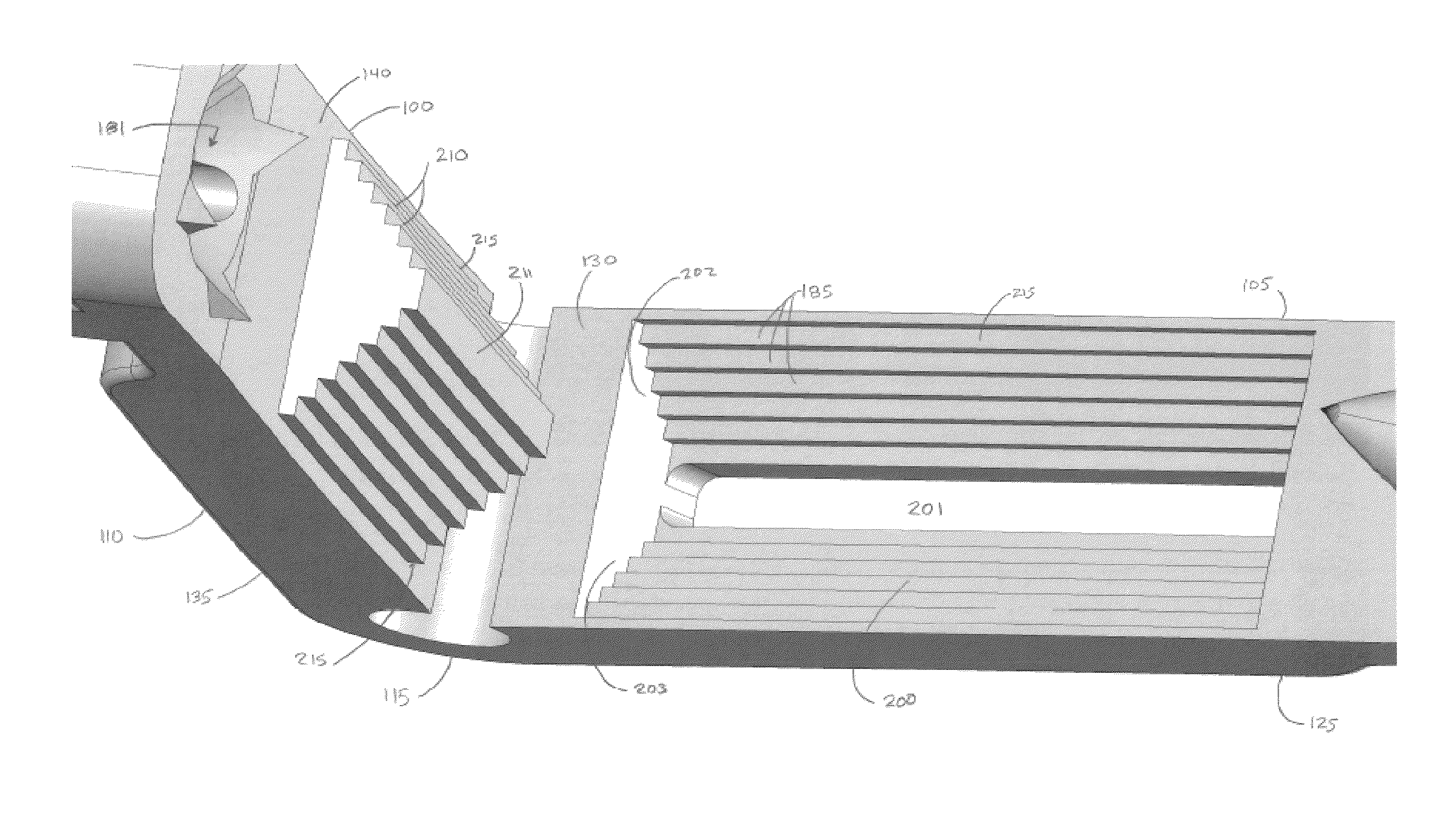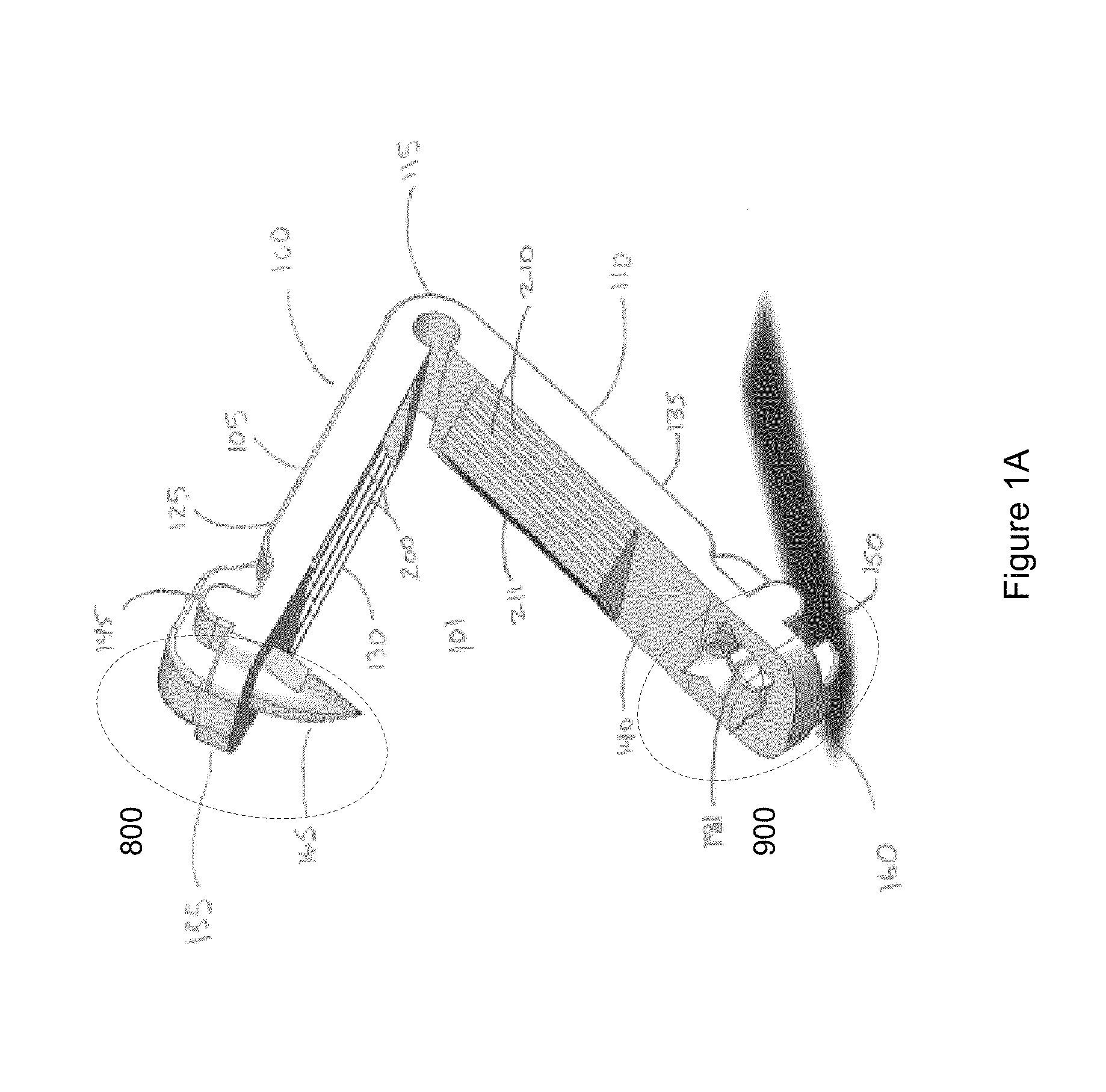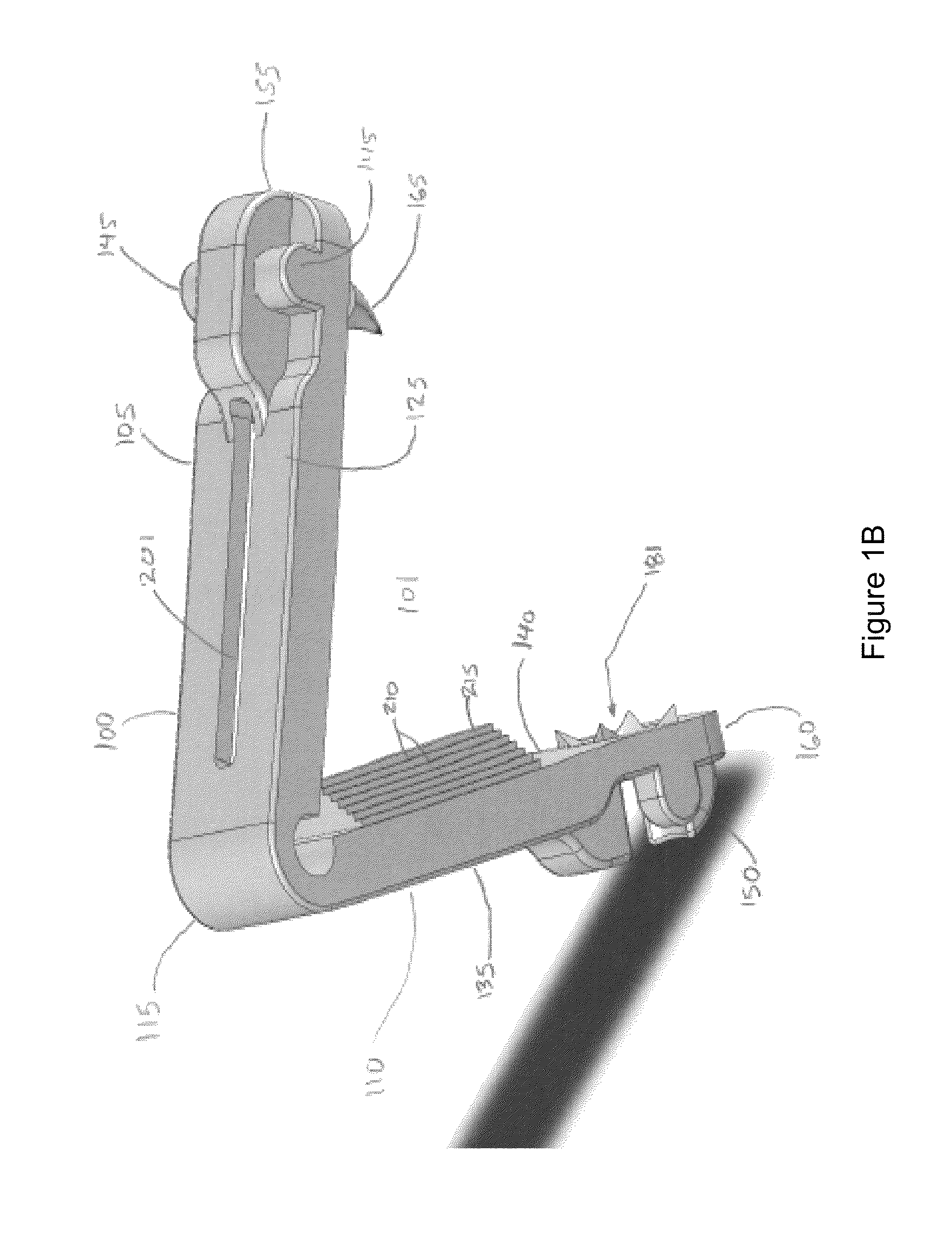Surgical clips with penetrating locking mechanism and non-slip clamping surfaces
a surgical clip and locking mechanism technology, applied in the field of surgical clips, can solve the problems of end fitting insecurely under intense strain, and achieve the effects of preventing dislodgment of the clip, stabilizing during use, and preventing undesirable angulation (angular disorientation)
- Summary
- Abstract
- Description
- Claims
- Application Information
AI Technical Summary
Benefits of technology
Problems solved by technology
Method used
Image
Examples
Embodiment Construction
[0070]In one embodiment, ligating clips comprise a tissue-penetrating locking mechanism with an elongated receptacle, a configuration of slip-resisting grooves on the clamping surfaces, and a hinge lock.
Clip Arms
[0071]With reference to FIGS. 1A through 3, in one embodiment, a clip 100 according to principles of the invention generally includes a pair of clamping arms 105 and 110, adjoined at an integral flexible hinged joint 115 (the “hinge”), free at the other end 155, 160 and defining an opening 101 therebetween, such as an opening having a generally u- or v-shaped space. The opening 101 is preferably sufficiently wide to engage a vessel, organ or tissue to be ligated. In the exemplary embodiment shown in FIGS. 1A, 1B, 1C, the clamping arms 105, 110 are generally rigid. However, the hinged end 115 is sufficiently flexible so that the arms, 105, 110 can be angularly deflected bringing their free ends 155, 160 towards each other to decrease the space between the arms 105, 110, until...
PUM
 Login to View More
Login to View More Abstract
Description
Claims
Application Information
 Login to View More
Login to View More - R&D
- Intellectual Property
- Life Sciences
- Materials
- Tech Scout
- Unparalleled Data Quality
- Higher Quality Content
- 60% Fewer Hallucinations
Browse by: Latest US Patents, China's latest patents, Technical Efficacy Thesaurus, Application Domain, Technology Topic, Popular Technical Reports.
© 2025 PatSnap. All rights reserved.Legal|Privacy policy|Modern Slavery Act Transparency Statement|Sitemap|About US| Contact US: help@patsnap.com



